Disclosure: This post may contain affiliate links. I may earn a small commission for my endorsement, recommendation, testimonial, and/or link to any products or services from this website.
It’s so easy to make homemade egg noodles with just flour, salt, water and eggs! You don’t need any special equipment for an old fashioned egg noodles recipe — just like my great grandma used to serve. Toss the thick, tender noodles with butter for a simple side dish, simmer them in chicken broth for a flavorful soup, add them to your favorite casserole, or pair them with a hearty stew. These versatile Amish egg noodles will soon become a family favorite!
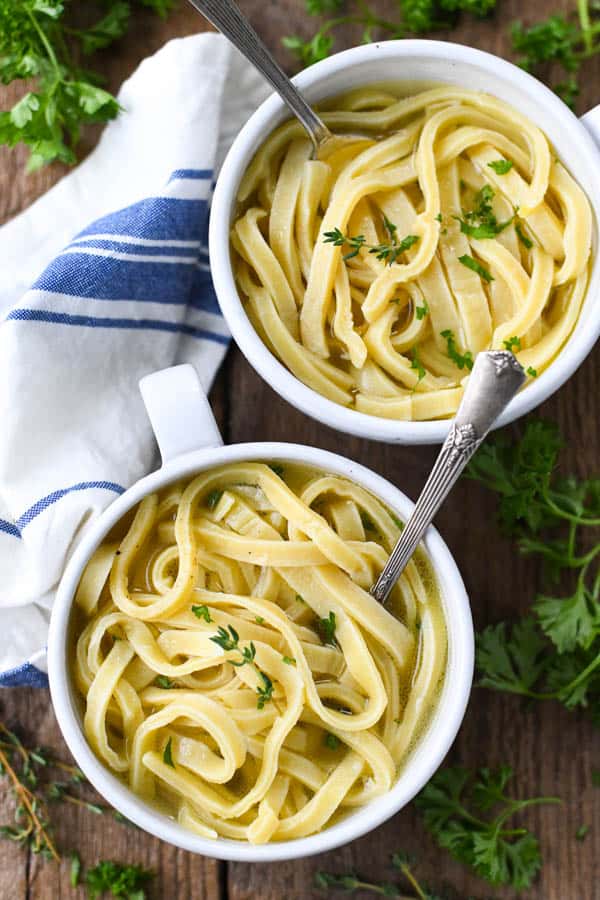
Amish Egg Noodles
We live in rural Central Virginia, right near a little country market where we can easily purchase Amish egg noodles whenever the craving strikes. They’re thick, doughy, dumpling-like noodles that add such a delicious, rustic flavor and texture to some of our favorite comfort food dishes. But you don’t need to shop in a local Amish market to be able to enjoy this classic treat. Instead, you can make homemade egg noodles from scratch (without a pasta machine) with about 30 minutes of hands-on time. They’re so simple, so easy, and so incredibly good!
Egg Noodles vs. Pasta
If you’ve tried unsuccessfully to make classic Italian pasta, don’t despair. Homemade egg noodles are easier than traditional pasta, and practically fool-proof. While homemade pasta and homemade egg noodles both include eggs, egg noodles have a higher ratio of eggs-to-flour (dry store-bought pasta, by the way, doesn’t usually contain any eggs). Pasta typically calls for some semolina flour mixed with all-purpose flour, while egg noodles can be made entirely with all-purpose flour. Finally, pasta is shaped into a variety of forms, while egg noodles are typically just cut into the classic long, thick noodle.
Thanks to the egg yolks, egg noodles appear more yellow in color than regular pasta. Homemade egg noodles also have a different texture than store-bought noodles. They’re thicker, slightly chewier, and are very similar to dumplings. The homemade rustic noodles are seriously one of my kids’ absolute favorite foods, and I’m so excited for you to try them as well!

Ingredients
Here’s a quick peek at what you’ll need to prepare the homemade dumpling noodles. As always, the full list of measurements and detailed instructions are included in the recipe box at the bottom of this post.
- Eggs: three yolks and one whole egg
- Cold water: to bring your dough together
- Salt: for flavor
- All-purpose flour: the base of the noodle dough
- Canola oil: totally optional — not necessary — but oil or butter is often added to noodle recipes because the fat makes the dough more supple and easy to roll out. I always include the oil to improve the texture of the dough; however, you can omit this ingredient if you prefer.
How to Make Homemade Egg Noodles from Scratch
Follow these easy, step-by-step instructions for the best homemade noodles with just 30 minutes of hands-on time. They’re a cozy, comfort food dish that we love to serve on snow days or chilly evenings.
Step 1: Make Dough
Use a wooden spoon to combine all of the ingredients in a large bowl until a soft dough comes together.
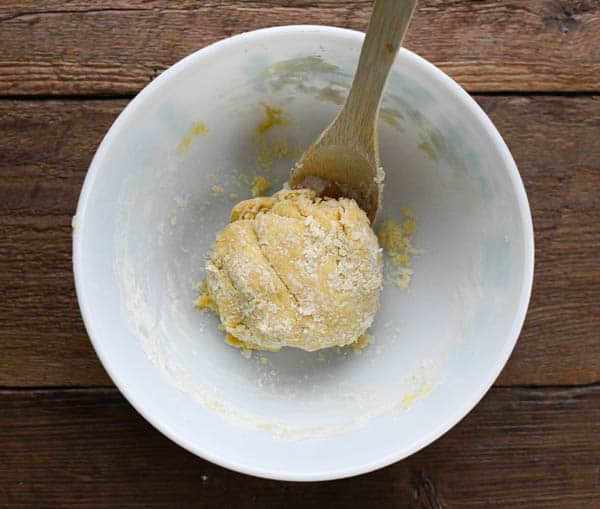
Step 2: Knead
Turn the dough onto a floured surface and knead for about 5-10 minutes, until the dough is smooth and firm.
Step 3: Rest
Divide the dough into 3 equal portions, cover, and let rest for 10 minutes.
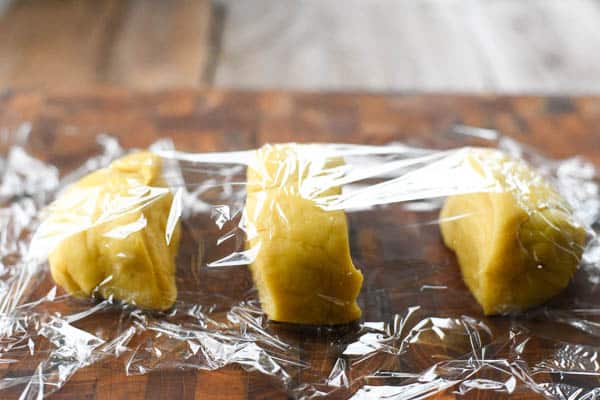
Step 4: Roll
Working with one portion at a time, roll out the dough as thin as you like — anywhere from about ¼-inch thick to paper-thin.
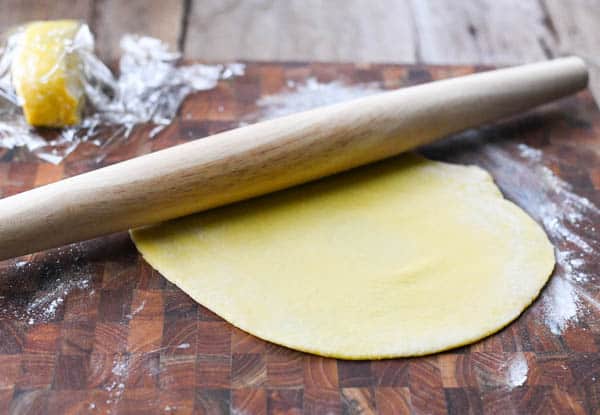
Step 5: Cut
You can use a pasta machine to roll out and cut the dough if you like, but I find that it’s quick and easy to just cut the noodles by hand with a sharp knife. To do so, roll the dough jelly roll-style and cut the noodles to your desired width.
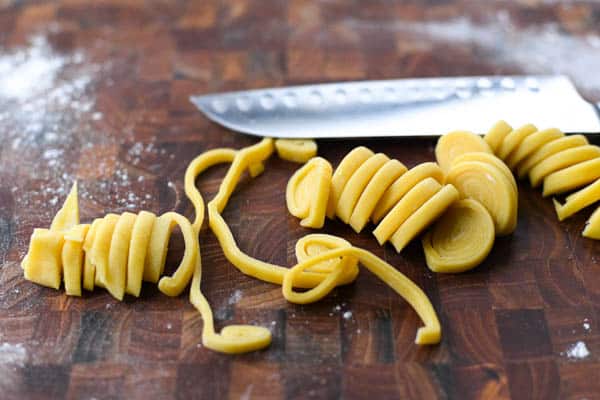
Step 6: Dry
You do not need to let these noodles completely harden and dry overnight. Instead, let them sit on paper towels for about 40 minutes – 1 hour, or just until they’re no longer damp on the surface.
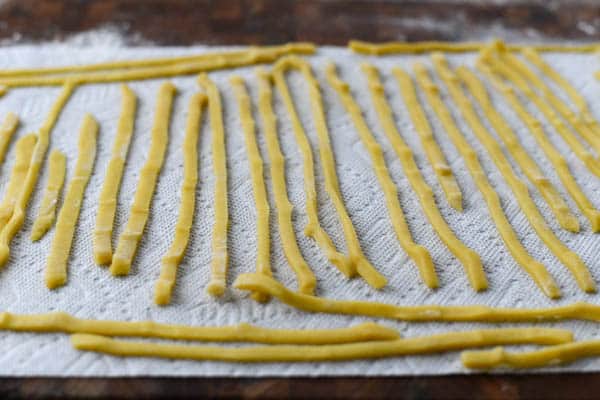
Step 7: Boil
Cook the noodles in a large pot of salted boiling water (or in a pot of chicken broth) until tender — but not too soft. The total cooking time will vary depending on the width and thickness of your noodles, about 2-10 minutes. Give them a taste to know when they’re done to your liking.
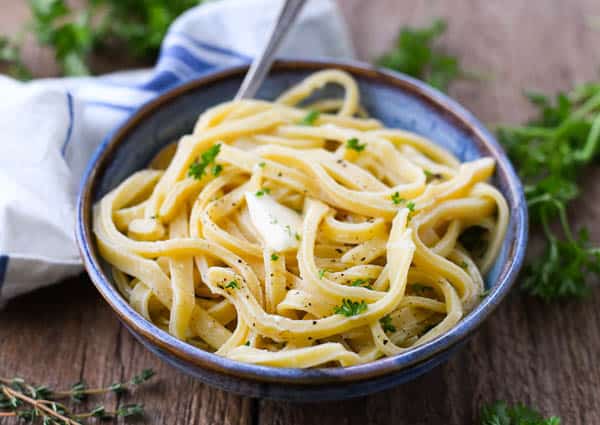
Storage
If you don’t want to cook the egg noodles right away, you can let the uncooked noodles air-dry on a drying rack, over coat hangers, or on the back of a chair until completely dry (leaving them out overnight, if necessary). Then store the noodles in an airtight container at room temperature for up to 1 month.
Some folks like to refrigerate or freeze their egg noodles before cooking; however, they may get soggy when not stored at room temperature.
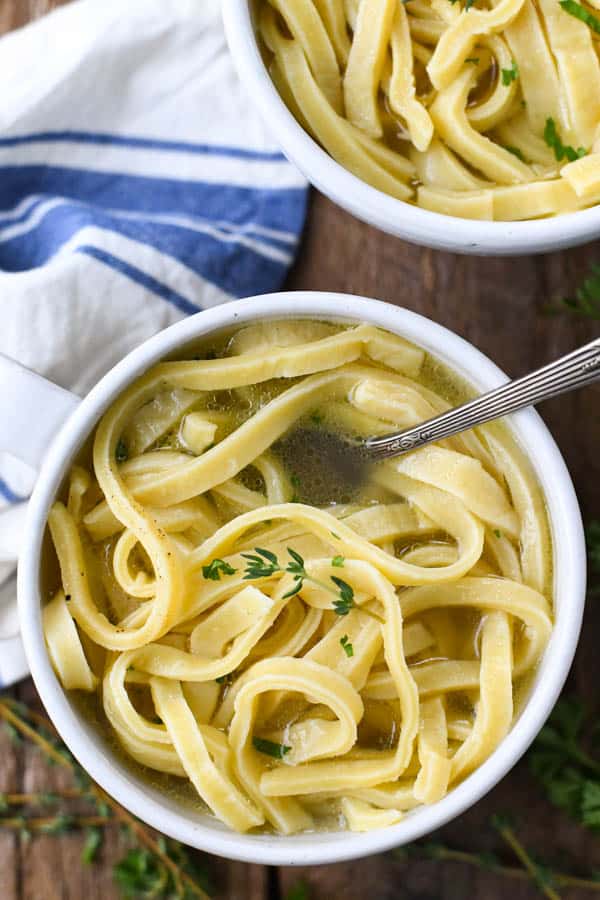
What to Make with Homemade Egg Noodles
These versatile noodles can be used in a variety of ways. Here are a few good options:
- Side dish: toss the cooked noodles with butter and season with salt and pepper. Garnish with fresh parsley, if desired.
- Homemade Chicken Noodle Soup with Egg Noodles
- Make a simple soup by boiling the homemade noodles in this homemade chicken broth. It’s one of my kids’ favorite meals, and a perfect cozy lunch on a chilly day!
- Noodle Casseroles: favorites include this chicken noodle casserole and this classic tuna noodle casserole.
- Chicken and Dumplings: use this recipe, but replace the Bisquick dumplings with these thick homemade dumpling noodles.
- Serve the noodles with Hungarian Goulash, Beef Stew, Chicken Stew, Salisbury Steak, or Beef Stroganoff.
- Farmhouse Chicken and Noodles
- Homemade Egg Noodles in the Crock Pot

Tips for the Best Homemade Egg Noodle Recipe
- Canola oil is an optional ingredient, but recommended because the fat makes the dough supple and easier to roll out.
- Cut the noodles to your desired width: about ⅛-inch for fine noodles, ¼-inch for wide noodles, and ½-inch for broad (or extra wide) noodles.
- Roll the dough as thick or as thin as you like, but remember that the noodles plump up quite a bit when cooked, so roll the dough thinner than you think it needs to be. For thick, dumpling-like noodles, roll the dough to ¼-inch thickness. For thinner noodles, roll until the dough is paper-thin.
- Try to roll and cut the noodles to a uniform width and thickness. This will help keep the cooking time even, ensuring that all of your noodles are cooked perfectly.
- You can use a pasta machine (if you have one) to roll the dough instead of a rolling pin. The pasta roller will create noodles with a uniform thickness.
- Total cooking time will vary depending on the width and thickness of your noodles. Homemade fresh noodles typically require between 2 and 10 minutes (mine are usually done in about 5-6 minutes). The best way to know that your noodles are done is to taste one! You want them to be tender, but not too soft and mushy.
- If you choose to let your noodles dry completely overnight, the dried noodles will require about 10-12 minutes of cooking time.
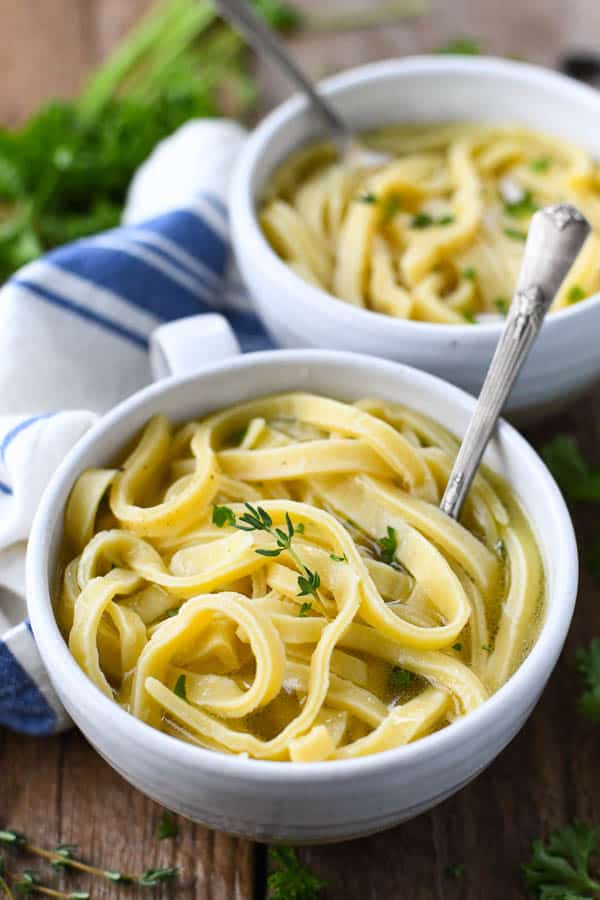
More Egg Noodle Recipes to Try
- Beef Stroganoff Casserole
- Johnny Marzetti Casserole
- Aunt Bee’s Swedish Meatballs
- Amish Hamburger Casserole
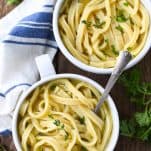
Homemade Egg Noodles
Ingredients
- 3 egg yolks
- 1 whole egg
- 3 tablespoons cold water
- 1 teaspoon salt
- 3 tablespoons canola oil (optional)
- 2 cups all-purpose flour
Instructions
- Beat the yolks and egg until light. Beat in water, oil (if using), and salt. Using your hands or a wooden spoon, work in the flour until well blended and a stiff dough forms. Turn the dough onto a well-floured work surface and knead for 5-10 minutes, or until the dough is smooth, firm, and no longer sticky (adding flour as necessary while you knead). Divide dough into 3 equal portions. Cover with plastic wrap and let rest for 10 minutes. Dust the counter with flour and roll each portion of dough as thin as you like (anywhere from ¼-inch thick to paper-thin). Cover with a dish towel and let rest for 10 more minutes.
- Sprinkle each portion of dough lightly with flour, then roll up like a jelly roll. Use a sharp knife to cut your noodles to the desired width (about ⅛-inch for fine noodles, ¼-inch for wide noodles, and ½-inch for broad (or extra wide) noodles). Open up the strips, spread them out on paper towels, and let dry. They will be ready to cook when they’re no longer damp on the surface, but they're still pliable, about 40 minutes – 1 hour.
- To cook the noodles, bring a large pot of salted water or chicken broth to a boil. Drop the noodles into the boiling liquid and cook until just tender (but not too soft), about 2-10 minutes, depending on the thickness of your noodles.
Notes
- Canola oil is an optional ingredient, but recommended because the fat makes the dough supple and easier to roll out.
- Cut the noodles to your desired width: about 1/8 -inch for fine noodles, ¼-inch for wide noodles, and ½-inch for broad (or extra wide) noodles.
- Roll the dough as thick or as thin as you like, but remember that the noodles plump up quite a bit when cooked, so roll the dough thinner than you think it needs to be. For thick, dumpling-like noodles, roll the dough to ¼-inch thickness. For thinner noodles, roll until the dough is paper-thin.
- Try to roll and cut the noodles to a uniform width and thickness. This will help keep the cooking time even, ensuring that all of your noodles are cooked perfectly.
- You can use a pasta machine (if you have one) to roll the dough instead of a rolling pin. The pasta roller will create noodles with a uniform thickness.
- Total cooking time will vary depending on the width and thickness of your noodles. Homemade fresh noodles typically require between 2 and 10 minutes (mine are usually done in about 5-6 minutes). The best way to know that your noodles are done is to taste one! You want them to be tender, but not too soft and mushy.
- If you choose to let your noodles dry completely overnight, the dried noodles will require about 10-12 minutes of cooking time.

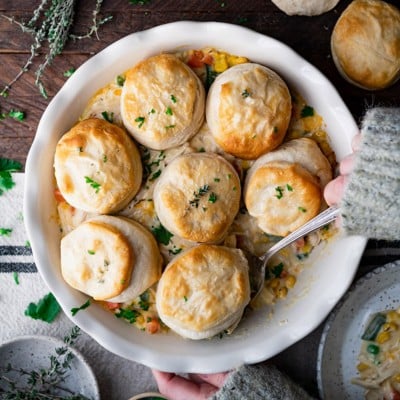
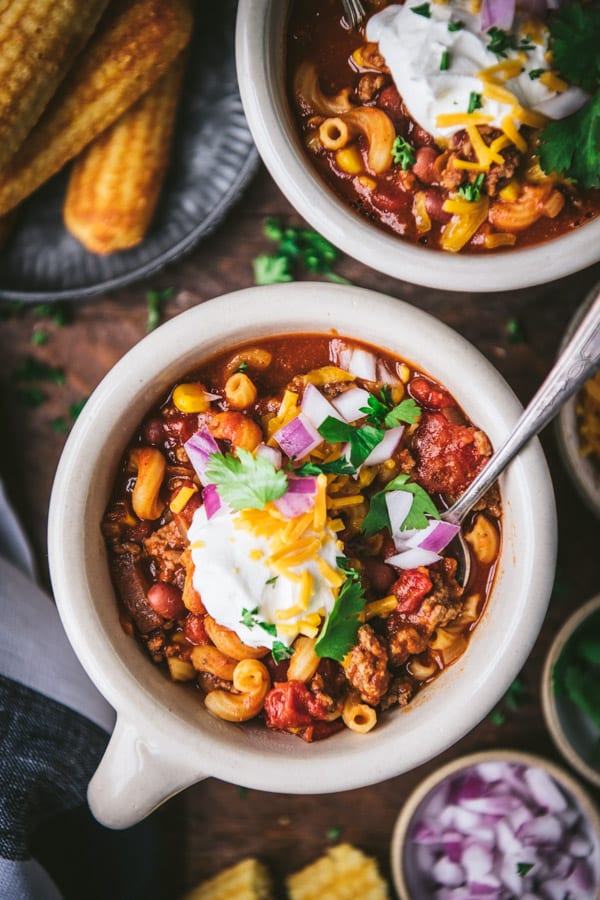
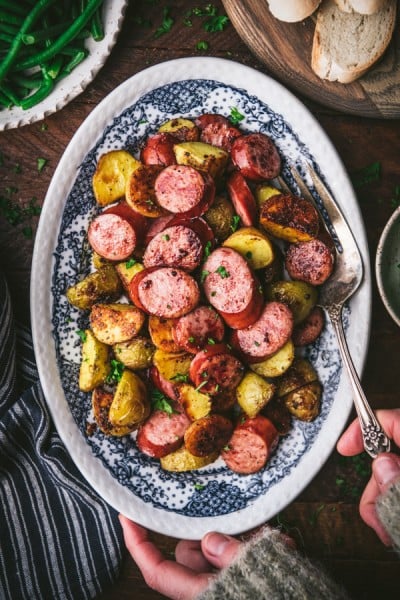








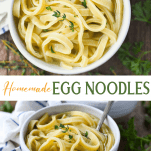
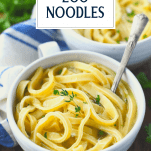
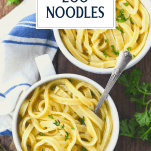
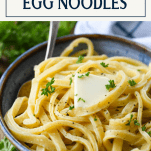
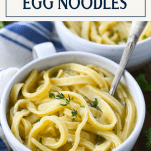
Do frozen eggs work in this noodle recipe? Thanks!
Hi, Mary Ann! I’ve never tried using frozen eggs, but I imagine that if you thaw them first, they should work fine. Enjoy!
First, can I persuade you to adopt a 33 year old kid? I swear, I’ll help with the dishes! Your recipes are phenomenal!!
Second, I’m allergic to canola. Do you think substituting it with vegetable or olive oil would still offer the same end result?
Thanks a million for your advice, your recipes, and all of your awesomeness!
-Autum
You’re so kind, Autumn! I’d love some help with the dishes, and I’d be happy to feed you!!! 🙂
Yes, you can absolutely substitute with either vegetable or olive oil. I would prefer vegetable oil because it will not flavor the noodles in any way, but you can certainly use olive oil if you don’t mind the taste in your pasta. Whatever you like! Hope you enjoy them!